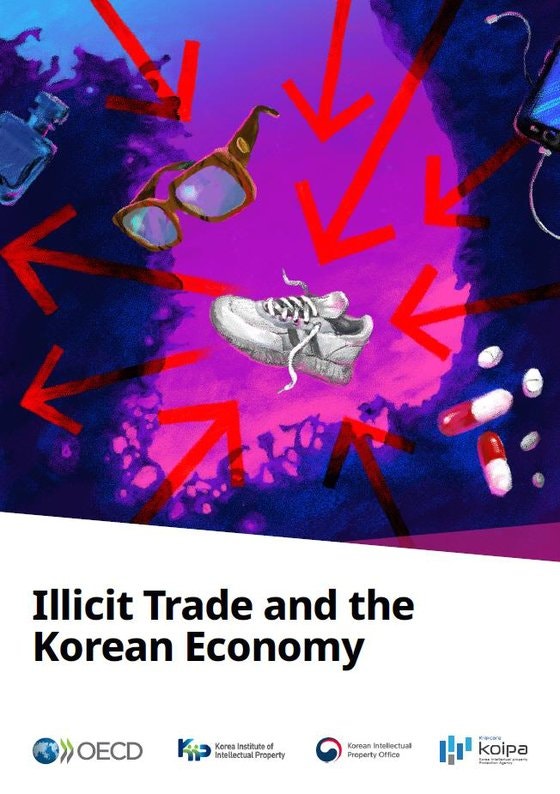
‘불법무역과 한국경제’ 요약 보고서 표지. 사진 특허청
, ‘ It was revealed that the scale of counterfeit goods infringing on the intellectual property rights of Korean companies distributed worldwide amounts to approximately $9.7 billion (about 11.1 trillion won, based on 2021 figures). This accounts for 1.5% of Korea’s total export volume. ‘,
, ‘ According to the Korean Intellectual Property Office on the 4th, the Organization for Economic Cooperation and Development (OECD) published the report titled ‘Illicit trade and the Korean economy’ on the 3rd, containing this information. ‘,
, ‘ The report, commissioned by the Korean Intellectual Property Office to analyze the economic losses of Korean companies due to the distribution of counterfeit goods, is the first case in which the OECD has analyzed the economic impact of counterfeit goods distributed by Korean companies. ‘,
, ‘ According to the report, half of the counterfeit goods of Korean companies were found to be electronic products. The most affected items in 2020 and 2021 were electronic products (51%), textiles and clothing (20%), cosmetics (15%), general merchandise (6%), and toys/games (5%), in that order. The regions where these counterfeit goods originated were primarily Hong Kong (69%) and China (17%). ‘,
, ‘ The report pointed out that although Korea is an innovative country globally, it is structurally vulnerable to counterfeit goods in various sectors as it is solidly integrated into the global value chains. The OECD analyzed that the distribution of counterfeit goods by Korean companies leads consumers to purchase counterfeit goods instead of authentic ones, adversely affecting domestic and international sales, manufacturing jobs, government revenues, and other aspects. ‘,
, ‘ The OECD quantitatively estimated the negative impact of the spread of counterfeit goods on the decrease in domestic and international sales of Korean companies, manufacturing jobs, and government revenues. ‘,
, ‘ Accordingly, the loss of domestic and international sales of Korean companies amounted to approximately $6.1 billion (about 7 trillion won). This accounted for 0.6% of total manufacturing sales. ‘,
, ‘ By industry, the greatest loss occurred in the electronics and telecommunications equipment sector with $3.6 billion, followed by automobiles with $1.8 billion. As of 2021, the loss of manufacturing jobs in Korea was 13,855, accounting for 0.7% of total manufacturing jobs. The OECD estimated that the government suffered a total loss of $1.57 billion in 2021 in terms of tax revenue. ‘,
, ‘ Kim Wanki, Commissioner of the Korean Intellectual Property Office, stated, “The distribution of counterfeit goods by Korean companies not only damages the brand image of individual companies but also causes serious harm to the national economy in terms of company sales, jobs, and tax revenues,” and said, “Based on the results of this OECD study, we will strengthen support to minimize the overseas intellectual property damage of Korean companies.” ‘,
, ‘ Meanwhile, last March, the government announced the ‘Enhanced Response Plan for K-Brand Counterfeit Goods,’ which includes measures such as expanding the blockage of online counterfeit goods globally, providing support for industries with high prevalence of counterfeit goods overseas, and establishing a public-private response system, in order to strengthen the response to intellectual property damage of Korean companies. ‘,
,
,
,

